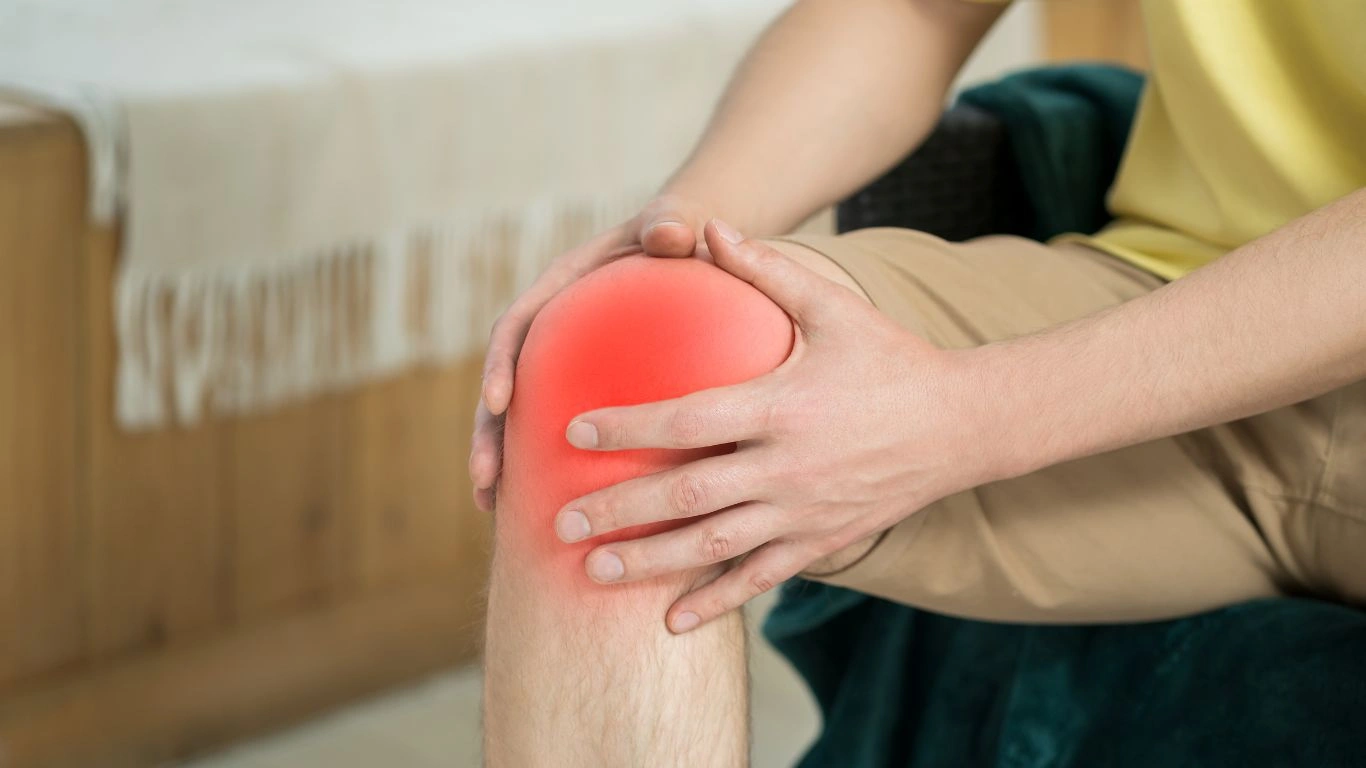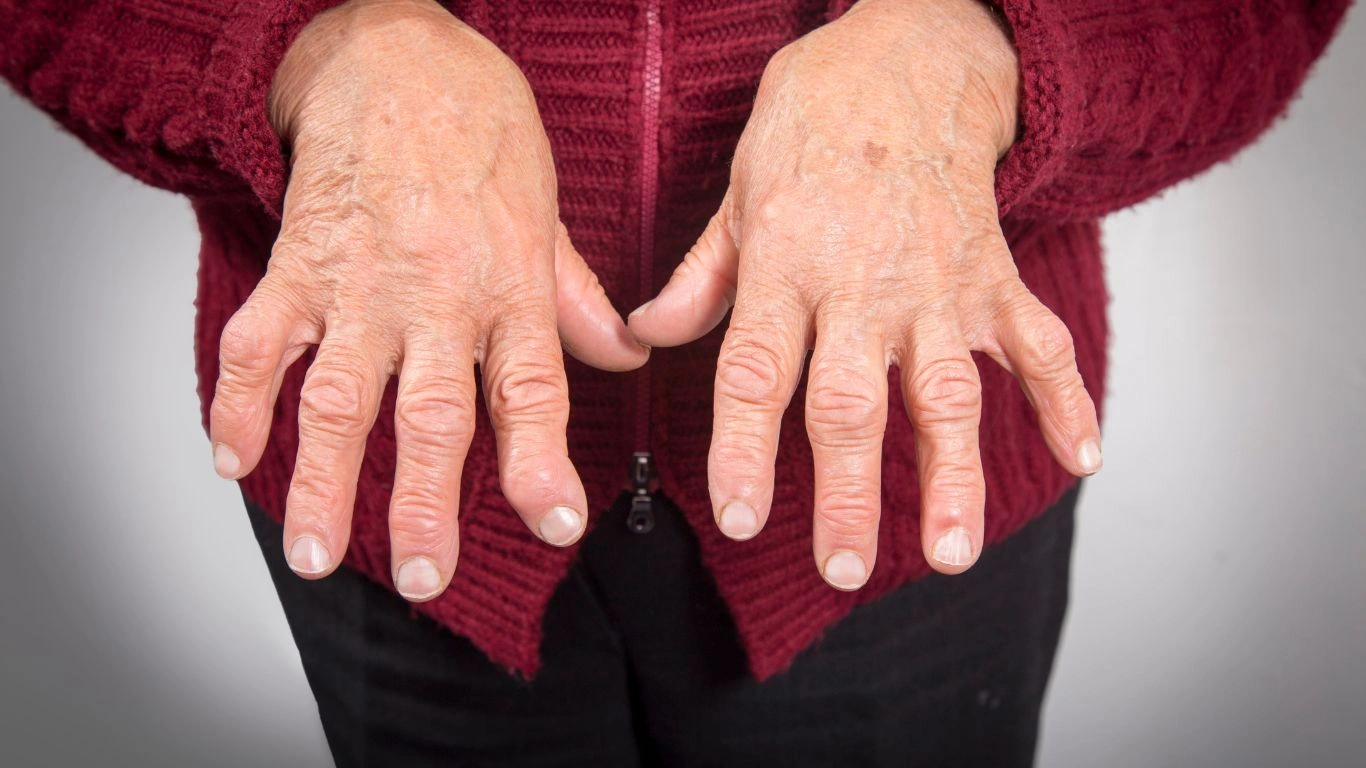Rheumatoid Arthritis & High Cholesterol: Shocking Connection You Must Know
Rheumatoid arthritis and its connection to high cholesterol isn’t something most people think about, but trust me—it’s a link worth paying attention to. As someone who has spent years working with patients battling RA, I’ve seen firsthand how inflammation and lipid levels play off each other in ways that can make symptoms worse. If you’ve ever wondered why your cholesterol levels seem off despite your best efforts or why your joints feel stiffer when your numbers spike, you’re not alone. Let’s break it down in a way that actually makes sense—without the confusing medical jargon.
Rheumatoid Arthritis: More Than Just Joint Pain

Most people associate rheumatoid arthritis (RA) with aching joints, morning stiffness, and swollen fingers. But RA is an autoimmune disease, meaning your own immune system mistakenly attacks your joints, thinking they’re an enemy. Over time, this chronic inflammation wreaks havoc, not just in your joints but throughout your entire body—including your heart and blood vessels.
Now, here’s where it gets interesting. RA doesn’t just cause pain—it can also mess with your metabolism. That’s right, the same inflammation that’s causing your swollen knuckles can also contribute to high cholesterol levels. And that, my friends, is where the real trouble starts.
How Inflammation Impacts Cholesterol Levels

Let’s talk about inflammation. When you have RA, your body is in a constant state of battle, pumping out inflammatory proteins like cytokines. These little troublemakers don’t just attack your joints—they also interfere with how your body handles cholesterol.
The Cytokine-Cholesterol Connection
Research has shown that people with RA tend to have an unusual cholesterol profile. Instead of the typical high LDL (bad cholesterol) and low HDL (good cholesterol) that we hear about all the time, RA patients often have a paradoxical lipid profile. This means their total cholesterol might look “normal” on paper, but the quality of their cholesterol is off.
- Inflammation makes LDL cholesterol smaller and denser, making it more dangerous.
- HDL, which is supposed to be protective, becomes dysfunctional and loses its ability to clear bad cholesterol.
- Chronic inflammation speeds up the hardening of arteries, increasing cardiovascular risk.
This is why many RA patients find themselves dealing with heart issues, even if they don’t have typical risk factors like obesity or diabetes. It’s not just about the numbers—it’s about how inflammation is sabotaging the system.
Why Cholesterol-Lowering Medications Work Differently in RA Patients

One of the biggest surprises I’ve seen in my practice is how cholesterol-lowering medications (like statins) affect RA patients differently. While these drugs are commonly prescribed to lower cholesterol and protect heart health, people with RA sometimes respond in unexpected ways.
Statins: A Double-Edged Sword?
Statins work by blocking an enzyme in the liver that produces cholesterol, but they also have anti-inflammatory properties. This sounds great for RA patients, right? Well, yes and no.
- Some studies suggest statins can help reduce RA symptoms by calming inflammation.
- Other research shows that statins might increase the risk of developing RA in some individuals.
- There’s also the issue of muscle pain, a common side effect of statins, which can make distinguishing RA flares from medication side effects tricky.
What does this mean for you? If you have RA and high cholesterol, don’t just assume that popping a statin is the perfect solution. It’s crucial to work closely with a doctor who understands both conditions and can tailor a treatment plan that balances heart health with joint health.
How Diet and Lifestyle Affect Both RA and Cholesterol

Over the years, I’ve had countless patients ask, “Can I really improve my RA and cholesterol with diet and lifestyle changes?” And let me tell you—absolutely, yes! Now, I’m not saying you can cure RA or magically make high cholesterol disappear overnight, but small, consistent changes? They can make a huge difference.
When I first started digging into the connection between rheumatoid arthritis and cholesterol, I was shocked at how much our daily habits influence both conditions. Turns out, what we put on our plate (or don’t) directly impacts inflammation levels, joint pain, and even our lipid profiles.
The Worst Offenders: Foods That Worsen RA and High Cholesterol
If you have RA, you’ve probably already noticed that some foods seem to make your symptoms worse. What’s surprising is that these same foods also contribute to unhealthy cholesterol levels. Here’s what you might want to cut back on:
- Processed and fried foods: Loaded with trans fats, these wreak havoc on both cholesterol and inflammation.
- Refined carbs: White bread, pastries, and sugary cereals can spike blood sugar and fuel inflammation.
- Red and processed meats: High in saturated fats, they’ve been linked to increased inflammation and cholesterol issues.
- Excessive dairy: While some people handle dairy just fine, others notice it triggers more joint pain.
- Alcohol: A little may be okay, but too much can increase inflammation and mess with lipid levels.
I remember one patient—a woman in her mid-50s—who swore by her morning bagel and coffee with flavored creamer. She also had stubbornly high cholesterol and constant RA flares. When we tweaked her breakfast routine to include more healthy fats and protein, her inflammation markers started dropping within weeks.
Anti-Inflammatory Foods That Help Balance RA and Cholesterol
Now for the good news: There are plenty of delicious foods that actually help lower inflammation and cholesterol at the same time! Some of my personal favorites include:
- Fatty fish: Salmon, mackerel, and sardines are packed with omega-3s, which help fight inflammation.
- Olive oil: A staple of the Mediterranean diet, it’s great for heart health and joint pain.
- Leafy greens: Spinach, kale, and arugula contain antioxidants that protect against inflammation.
- Avocados: These are full of heart-healthy fats that improve cholesterol and support joint function.
- Nuts and seeds: Almonds, walnuts, and flaxseeds provide essential nutrients and help manage inflammation.
- Berries: Blueberries, strawberries, and raspberries are rich in antioxidants that combat oxidative stress.
- Turmeric and ginger: These spices have natural anti-inflammatory properties and can be added to almost any dish.
One of my go-to meals? A simple grilled salmon with a side of roasted sweet potatoes and sautéed spinach. It’s packed with anti-inflammatory goodness and keeps both my joints and heart happy.
The Role of Exercise: Moving for Joint and Heart Health

Here’s a hard truth: When your joints hurt, the last thing you want to do is exercise. But trust me, movement is medicine. The right kind of exercise can help improve joint flexibility, reduce stiffness, and even lower cholesterol levels.
Low-Impact Workouts That Work for RA and Cholesterol
Not all exercises are created equal, especially when you’re dealing with RA. High-impact activities like running might not be the best choice, but here are some great alternatives:
- Swimming: The buoyancy of water takes the pressure off your joints while giving your heart a great workout.
- Yoga: Helps with flexibility, balance, and stress reduction—all important for RA management.
- Walking: A simple 20-30 minute walk daily can do wonders for both cholesterol and joint stiffness.
- Cycling: A great way to get cardio benefits without putting too much strain on the knees.
- Strength training: Light weightlifting helps maintain muscle mass and supports joint stability.
I had one patient who was terrified of exercising because she thought it would make her pain worse. We started slow—just five-minute walks after meals. Within a month, she was walking 30 minutes a day, feeling stronger, and even saw a drop in her cholesterol levels.
How Stress and Sleep Affect RA and Cholesterol

We often underestimate the power of stress and sleep when it comes to managing RA and cholesterol. But let me tell you—these two factors are just as important as diet and exercise.
The Stress-Inflammation-Cholesterol Cycle
When you’re stressed, your body releases cortisol, a hormone that can increase inflammation and disrupt cholesterol metabolism. Chronic stress can lead to:
- More frequent RA flares
- Higher levels of LDL (bad cholesterol)
- Increased blood pressure and cardiovascular risk
That’s why I always encourage patients to find stress-relief techniques that work for them. Some favorites include:
- Meditation: Just 5-10 minutes a day can lower inflammation levels.
- Deep breathing exercises: Helps relax the nervous system and reduce stress hormones.
- Spending time outdoors: Nature has a way of calming the mind and body.
The Importance of Quality Sleep
Did you know that poor sleep can make RA symptoms worse and contribute to high cholesterol? Lack of rest increases inflammation and affects how the body processes fats. Here are some tips to improve sleep:
- Avoid screens at least an hour before bed.
- Keep your bedroom cool, dark, and quiet.
- Stick to a consistent sleep schedule, even on weekends.
- Try a relaxing bedtime routine—warm tea, reading, or gentle stretching.
One of my patients struggled with RA flares and couldn’t figure out why. Turns out, she was only getting about 4 hours of sleep per night. Once she started prioritizing rest, her symptoms and cholesterol levels both improved.
Medical Treatments and Medications: What Works Best?

When it comes to managing rheumatoid arthritis and high cholesterol together, medication can play a crucial role. Now, I know many of my patients have mixed feelings about pharmaceuticals—some swear by them, while others prefer a more natural approach. But in reality, the right combination of treatments can make a huge difference in improving quality of life.
Common RA Medications and Their Impact on Cholesterol
RA treatments usually fall into a few main categories, and some of them can actually influence cholesterol levels—either positively or negatively.
- DMARDs (Disease-Modifying Anti-Rheumatic Drugs): These include methotrexate, hydroxychloroquine, and sulfasalazine. Some, like methotrexate, have been shown to improve cholesterol profiles by reducing inflammation.
- Biologics: Drugs like Humira and Enbrel target specific immune system pathways and can lower inflammation. However, some studies suggest they might slightly raise cholesterol levels.
- NSAIDs (Non-Steroidal Anti-Inflammatory Drugs): While helpful for pain relief, long-term use of NSAIDs can increase cardiovascular risks.
- Corticosteroids: Prednisone is effective for inflammation but is known to increase cholesterol and blood sugar levels over time.
One of my patients was struggling with both high cholesterol and RA. She was on long-term prednisone, which was helping her joints but pushing her cholesterol higher. With her doctor’s guidance, she gradually reduced the steroid dose and switched to methotrexate, which helped control inflammation while improving her lipid profile.
Cholesterol-Lowering Medications: Are They Safe for RA Patients?
Doctors often prescribe statins for high cholesterol, but for RA patients, it’s not always straightforward. Statins can lower LDL (bad cholesterol) and reduce cardiovascular risk, but they sometimes cause muscle pain—something already common in RA. Here’s what to consider:
- Statins with fewer muscle-related side effects: Some patients tolerate rosuvastatin (Crestor) or pravastatin better than others.
- Non-statin options: Ezetimibe or PCSK9 inhibitors can be alternatives for those who don’t tolerate statins well.
- Regular monitoring: If you take both RA medications and cholesterol meds, your doctor should keep a close eye on your liver function and muscle health.
Ultimately, the key is to work closely with your healthcare provider to balance your RA treatment with your cardiovascular health.
Holistic and Alternative Therapies: What Actually Helps?

Beyond medications and diet, many RA patients explore alternative therapies to manage symptoms and improve overall health. While not all remedies work for everyone, some have solid evidence backing their effectiveness.
Supplements That May Help
Before jumping into the supplement aisle, it’s essential to know which ones have real benefits and which are just hype. Here are a few that have shown promise:
- Omega-3 Fatty Acids: Found in fish oil, these help lower inflammation and support heart health.
- Turmeric (Curcumin): A natural anti-inflammatory that may help with joint pain and stiffness.
- Vitamin D: Low levels are linked to both RA and heart disease.
- Probiotics: Gut health is increasingly recognized as a factor in both inflammation and cholesterol regulation.
One of my patients started taking high-quality omega-3 supplements, and within a few months, she noticed less joint stiffness and a slight drop in her cholesterol levels. It’s not a miracle cure, but small changes add up!
Mind-Body Practices
Reducing stress and promoting relaxation can have a direct impact on inflammation and cholesterol. Some approaches that I’ve seen work well for RA patients include:
- Acupuncture: Some studies suggest it can help with pain relief and circulation.
- Meditation and Deep Breathing: Proven to reduce stress hormones that contribute to inflammation.
- Massage Therapy: Helps with muscle tension and improves circulation.
The key to alternative therapies is consistency. One massage or one turmeric tea isn’t going to change everything overnight, but integrating these methods into a daily routine can make a noticeable difference over time.
Final Thoughts: Taking Control of Your RA and Cholesterol
If there’s one thing I’ve learned from working with RA patients, it’s that no single approach works for everyone. Managing both RA and cholesterol requires a personalized strategy—one that takes into account diet, exercise, stress levels, and the right medications.
Here’s a quick recap of the most important takeaways:
- Inflammation and cholesterol are connected. Keeping RA under control can also help manage cholesterol levels.
- Diet matters. Anti-inflammatory foods like fatty fish, leafy greens, and nuts can support both conditions.
- Exercise is essential. Low-impact activities like swimming, yoga, and walking can benefit both joints and heart health.
- Medications must be balanced. RA treatments and cholesterol-lowering drugs should be carefully monitored for side effects.
- Stress and sleep play a huge role. Managing these factors can significantly impact both RA symptoms and cholesterol levels.
At the end of the day, the best thing you can do is stay informed, stay proactive, and work closely with your healthcare provider. You have more control over your health than you might think!
References
Disclaimer
The information provided in this article is for educational purposes only and should not be considered medical advice. Always consult with a qualified healthcare professional before making any changes to your diet, medications, or lifestyle.

Tarra Nugroho is a dedicated Nurse Practitioner with a strong foundation in family and preventive care. She brings both compassion and clinical expertise to her practice, focusing on patient-centered care and health education. As a contributor to Healthusias.com, Tarra translates medical knowledge into clear, empowering articles on topics like women’s health, chronic disease management, and lifestyle medicine. Her mission is simple: help people feel seen, heard, and informed—both in the clinic and through the content she creates. When she’s not caring for patients, Tarra enjoys weekend hikes, plant-based cooking, and curling up with a good health podcast.






